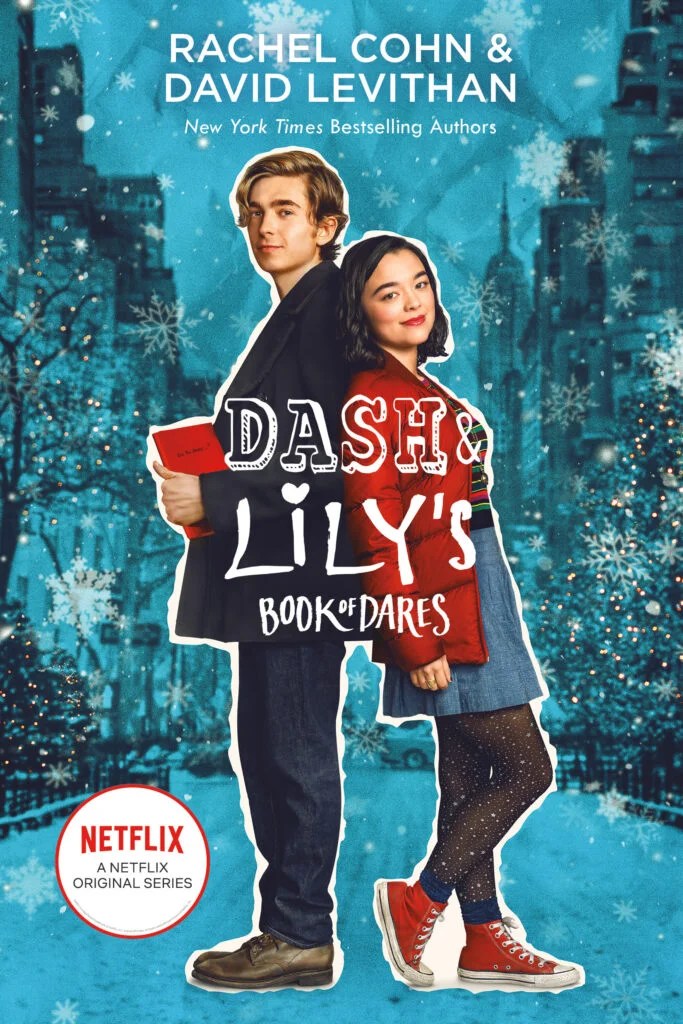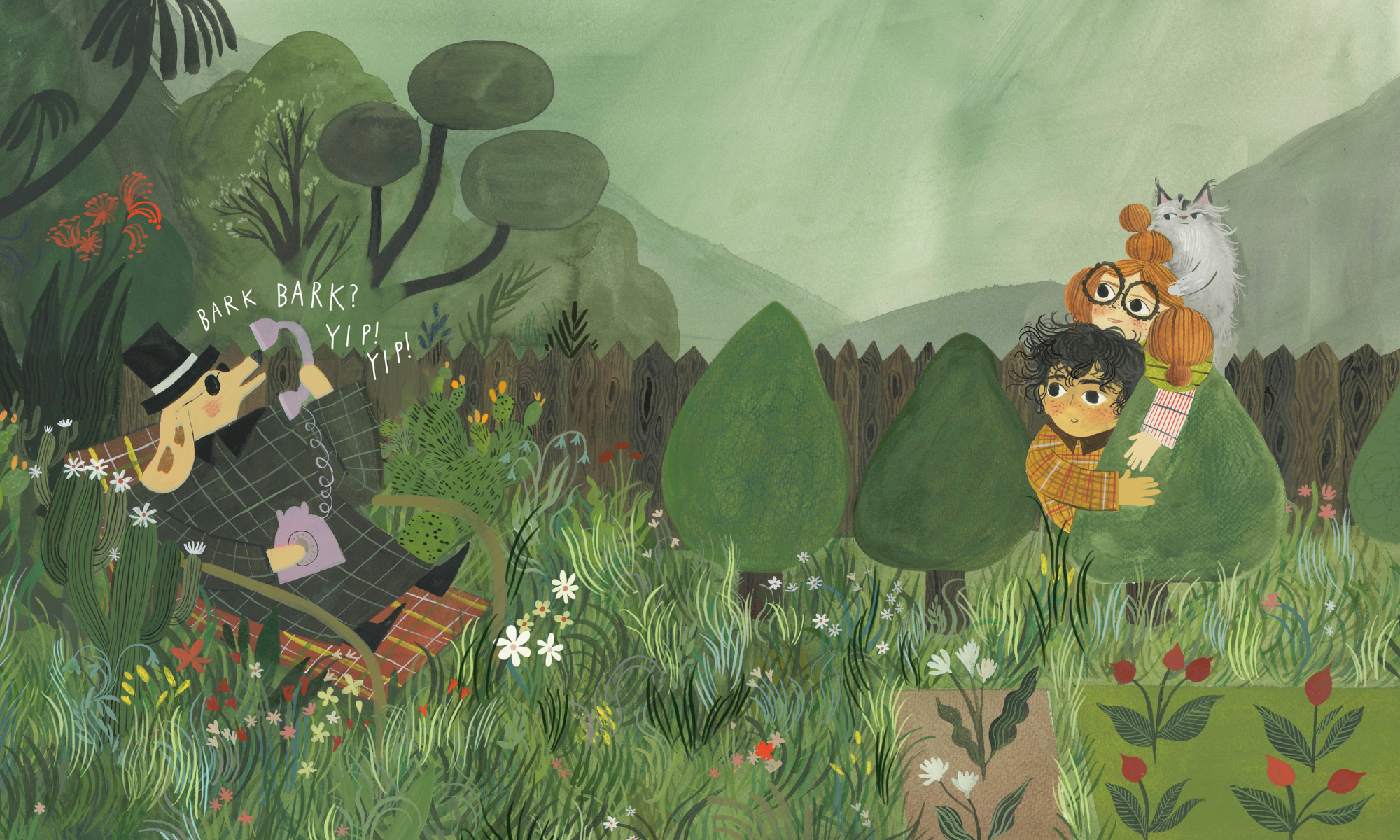Hello, and thanks for joining us at Tundra Telegram, the column where we address the topics that correspond to our readers’ concerns and deliver some appropriate books that have our stamp of approval.
Yesterday, December 7, was National Letter Writing Day, a day to celebrate the art of handwritten correspondence. Whether it’s a thank-you note, a message to update a friend or family member (and find out what’s new with them!), or a missive to the big man in red at the North Pole, yesterday was a great day to sit right down and write someone a letter.
We’ve got a great collection of books for every age all about written correspondence. Pen pal communications, love letters, messages written to people who may never read them: this list has it all when it comes to letter writing. P.S. Not only will we recommend these titles, we’ll try to include who is writing to whom – and why!
PICTURE BOOKS



I Do Not Like Yolanda by Zoey Abbott is an excellent picture book to start our letter journey because Bianca, the book’s main character, loves writing letters – everything about them: the stamps, the addresses, the pictures she can draw on them. She writes multiple letters a week, to everyone from her Uncle Kenta to her Sri Lankan pen pal. The only thing she does not like about writing letters is when she has to go to the post office to mail them and encounters Yolanda, her most dreaded post office employee. But Bianca soon learns first impressions can be as variable as mail delivery times.
A pivotal letter changes everything in The Bug Girl by Sophia Spencer (who is also the title character), Margaret McNamara, and Kerascoët. Seven-year-old Sophia is bullied at school for liking insects. Sophia’s mother writes to an entomological society looking for a bug scientist to be a pen pal for her daughter, and she’s overwhelmed by the response: letters, photos, and videos flood in and scientists tweet hundreds of times using the hashtag #BugsR4Girls to encourage Sophia’s interest in bugs. It’s the power of the written letter in action!
Drew Daywalt and Oliver Jeffers also demonstrate the power of the written message in their modern classic The Day the Crayons Quit. Eager to do some coloring, Duncan opens his crayon box only to find a series of “Dear John” letters. All the crayons have written to say they’ve quit – though all for their own particular reasons – in this ode to drawing, writing letters, and labor action.



Author Troy Cummings has written a fun trilogy of letter-writing picture books. The unusual part is that these letters are paw-written, as they’re penned by Arfy, a dog. In Can I Be Your Dog?, homeless Arfy writes cover letters to a series of people in an effort to find a forever home. In I Found a Kitty!, he seeks the same for a cat he discovers in a sewer pipe (!). And with Is This Your Class Pet?, Arfy writes letters to the teachers and principal of the school in which he’s a reading buddy after he finds a pet turtle gone astray. These books are essential reading for letter and animal fans.




We can believe a dog writing letters, but a dragon? Well, it happens in Dear Dragon: A Pen Pal Tale by Josh Funk and Rodolfo Montalvo. George writes regularly to his pen pal Blaise to talk sports, pets, and school. But George doesn’t realize his friend Blaise is a dragon, and Blaise doesn’t realize George is a human kid. Unintentional catfishing with mythical creatures? Count us in!
The Thank You Letter by Jane Cabrera is about writing letters of gratitude. In particular, it’s about Grace, who – after her birthday – decides to write letters to thank her friends and family for all their kind gifts. Realizing she has so much to be thankful for, she adds a letter to her teacher for helping her learn to write and one for her dog for wagging his tail. Grace soon finds this gratitude is reciprocated by the community, as she receives letters back from so many of her addressees.
What’s better than one thank-you letter? Ten Thank-You Letters, which also happens to be the name of a book by Daniel Kirk. Pig is trying to write a thank-you letter to his grandma when he’s interrupted by his friend Rabbit, who wants to play. Rabbit, inspired by Pig, begins to write a flurry of thank-you letters of his own – to everyone from the crossing guard to the President (shades of Grace!). His tenth thank-you letter is written to Pig for being such a great friend. (Awwww.)
For a book that’s both about letter-writing and the holidays, check out Dear Santa, Love, Rachel Rosenstein by Amanda Peet (yes, that Amanda Peet), Andrea Troyer, and Christine Davenier. Rachel Rosenstein is determined to celebrate Christmas. The fact that her family is Jewish is not going to stop her, since she’s writing Santa a letter to explain her situation (on top of dropping in on him at the mall). In the end, though Rachel loves the trappings of Christmas, she also gains a greater understanding of her own family’s traditions.
CHAPTER BOOKS & MIDDLE GRADE



Technically they are postcards in The Collected Works of Gretchen Oyster by Cary Fagan, but they count as written letters! Even better, they’re letters with a mystery attached. Hartley Staples is having some family troubles at home when he starts to notice handmade postcards all over his small town, all signed “G.O.” Soon Hartley becomes obsessed with these cryptic messages and the person responsible for them.
You already know who the letter recipient is in Susin Nielsen’s Dear George Clooney, Please Marry My Mom. The question is: does People Magazine’s Sexiest Man Alive (1997, 2006) write back? Violet’s parents have recently split up, and she lives with her mom, dragged along on her awkward quest for love as Violet faces her own struggles with anger management. When Violet’s mom starts dating someone named Dudley Wiener (!), Violet and her friend Phoebe embark on a campaign to lure Mr. Clooney.
The entire middle school seems to be writing letters to Autumn in Dear Student by Elly Swartz. See, Autumn has become the anonymous voice of an advice column in her school newspaper, which is fun until she finds herself in the middle of a problem that puts two of her friends on the opposing sides of a conflict. Can she provide fair advice, given her personal connection? Can her identity remain a secret? This is a book that digs into the ethics of letter responses.
YOUNG ADULT



Perhaps we don’t publish Jenny Han’s most famous letter-based YA romances, but we have plenty of quality YA literature featuring messages in envelopes. Even romances! For instance, Rachel Cohn and David Levithan’s Dash & Lily series are all about romance and the written word. In Dash & Lily’s Book of Dares (now a delightful Netflix series) it’s a red notebook full of challenges on a bookstore by which Dash and Lily flirt before they ever meet face-to-face. But by the third book, Mind the Gap, Dash & Lily, our lovestruck odd couple are writing each other from across the Atlantic Ocean, as Dash studies at Oxford University. (Twelve Days of Dash & Lily doesn’t have much letter writing content, to be honest, but it’s part of the series.)



An enthusiastic English teacher’s assignment is to blame for the letters in Sarah Henstra’s We Contain Multitudes. Closeted jock Kurl and nerdy and out Jo are thrown together in English class and forced to write an old-fashioned letter to each other every week. The unlikely pair become friends, sharing their experiences of homophobia, bullying, and familial abuse with one another, then something more in this emotional queer romance.
Again, not so much a series of letters as entries in a journal, Dear Martin by Nic Stone features Justyce McAllister, a Black teen facing challengers from police violence to toxic masculinity who turns to the teachings of Dr. Martin Luther King Jr. In his journal, he addresses his questions and concerns to the late Dr. King in an effort to see if King’s philosophies still have relevance in contemporary America, and these letters are interspersed throughout Justyce’s story. And if you like that, check out the follow-up Dear Justyce, in which incarcerated teen and friend from the neighborhood Quan writes letters to Justyce about his experiences in the juvenile justice system.
Write on, young readers!

